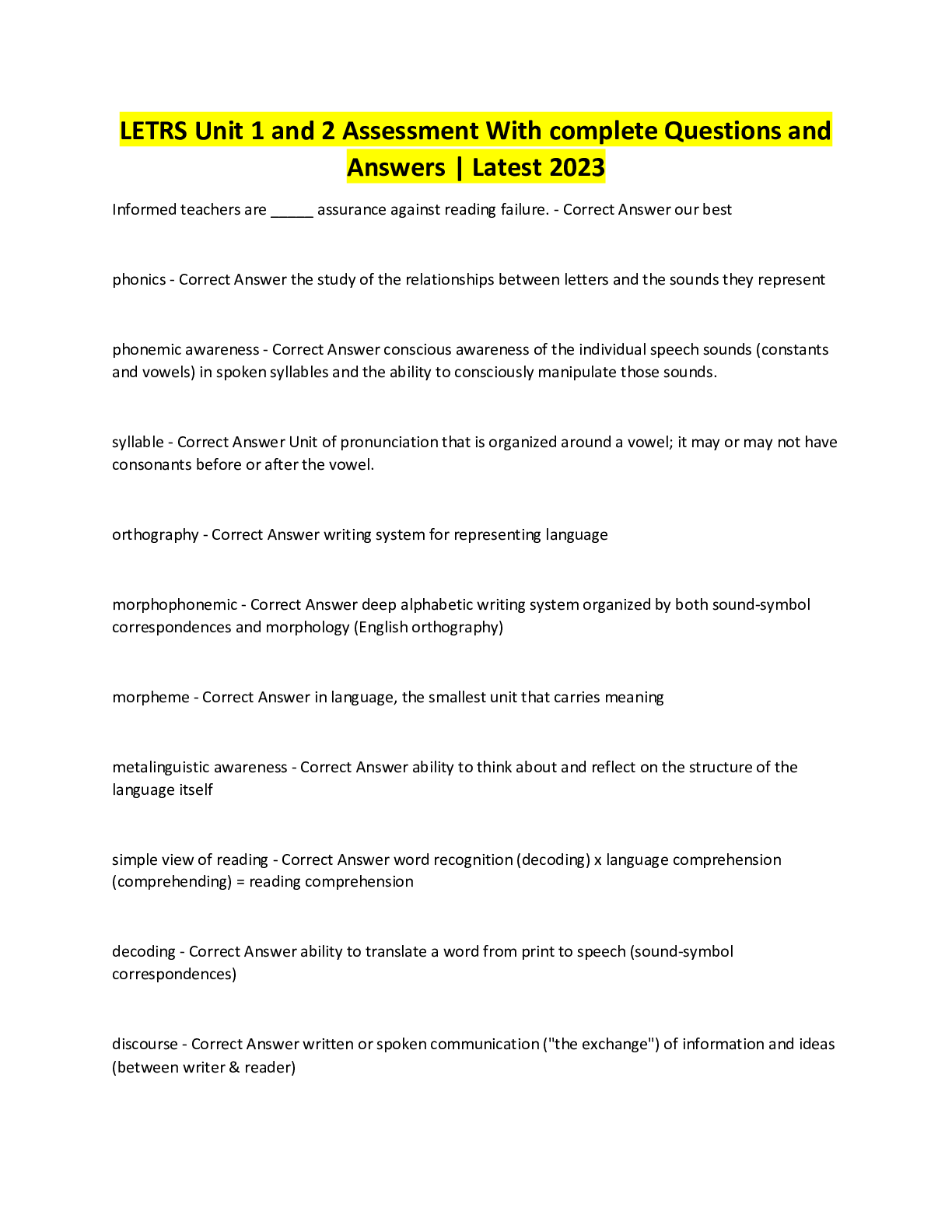*NURSING > EXAM > [HEALTHCARE] HURST READINESS EXAM 4 QUESTIONS AND ANSWERS GRADED A+ 100% SCORES LATEST 2023 (All)
[HEALTHCARE] HURST READINESS EXAM 4 QUESTIONS AND ANSWERS GRADED A+ 100% SCORES LATEST 2023
Document Content and Description Below
[HEALTHCARE] HURST READINESS EXAM 4 QUESTIONS AND ANSWERS GRADED A+ 100% SCORES LATEST 2023 Which client must the nurse assign to a private room? You answered this question Correctly 1. Primipar... ous client who delivered twins at 28 weeks gestation two days ago 2. Postpartum client on IV Ampicillin and Gentamicin for chorioamnionitis 3. Postpartum client whose 2 hour old infant is being worked up for sepsis 4. Postpartum client 32 hours after delivery with a temperature of 101º F (38.05 ° C) - RationaleStrategies 4. Correct: A temperature of 100.5° F (38.05° C) or greater in a client more than 24 hours postpartum is likely an indication of infection. This client should be kept separate from other mothers and babies. 1. Incorrect: The preterm twins are in the NICU and not in their mother's room (a client with term twins would need a private room because of space considerations). 2. Incorrect: Chorioamnionitis is not contagious. 3. Incorrect: The infant may have an infection and will remain in the NICU. The mother is not infected. Post thyroidectomy, the nurse assesses the client for complications by performing which assessment? You answered this question Correctly 1. Perform blood glucose monitoring every 6 hours 2. Check for a positive Chvostek's 3. Assess swallowing reflex 4. Monitor neck dressings for change in fit and comfort 5. Administer desmopressin per nasal spray for urinary output (UOP) greater than 200 mL/hr - RationaleStrategies 2., 3., & 4. Correct: A positive Chvostek's and Trousseau's is indicative of tetany (low calcium). This can occur when one or more of the parathyroids are accidently removed when the thyroid is removed. A weak, raspy voice, swallowing difficulty, and impaired respiratory status can be caused by nerve injury. Change in fit and comfort of the dressing can indicate possible neck swelling, which can affect the airway. 1. Incorrect: A possible complication of a thyroidectomy is to remove one or more parathyroid glands. The parathyroids' action is to regulate the serum calcium levels. The parathyroid does not regulate the blood glucose levels. 5. Incorrect: The action of desmopressin is to increase the reabsorption of water in the kidney. A decrease in vasopressin, (antidiuretic hormone) is not a complication of a thyroidectomy. A client diagnosed with pancreatitis becomes increasingly restless, confused and has pulled out the NG tube and IV catheter. HR-128/min, BP 96/62. Oxygen saturation = 90%. Skin is cool and clammy to touch. Prioritize the actions that the nurse should take. You answered this question IncorrectlyThe Correct Order Initiate oxygen. Insert another IV line. Obtain blood sugar level. Insert NG tube. Repeat vital sign checks Your Selected Order Repeat vital sign checks Initiate oxygen. Obtain blood sugar level. Insert NG tube. Insert another IV line. - RationaleStrategies First, initiate oxygen. The client is anxious and has tachycardia, signs of hypoxia. The BP is also low, so the client might be bleeding internally. If there is a decreased circulating blood volume then there is less hemoglobin to carry oxygen, so increasing the available oxygen will help the client until the problem is corrected. Second, get the IV started so fluid resuscitation can continue.This increased volume will improve the blood pressure. More volume, more pressure. The IV will also provide a port for needed medications. Third, check the client's blood sugar. Since the pancreas is sick, insulin production can be decreased so glucose can go up. This is next in the priority line of the available options. You have addressed air and circulation, so blood glucose would be next. Fourth, insert the NG tube so that the client can be kept empty and dry and you can prevent aspiration if the client starts vomiting. Last, recheck vital signs to assess effectiveness of your nursing actions. What is the best instruction the nurse should provide when administering acetylsalicylic acid 81 mg to a client experiencing severe, crushing chest pain radiating up the left jaw? You answered this question Correctly 1. Chew the acetylsalicylic acid prior to swallowing. 2. Place the acetylsalicylic acid under the tongue so that it can dissolve. 3. Swallow the acetylsalicylic acid tablet. 4. Insert the acetylsalicylic acid between the cheek and gum for greater absorption. - RationaleStrategies 1. Correct: Acetylsalicylic acid has been shown to decrease mortality and re-infarction rates after MI. The fastest way to get the aspirin into the circulatory system is to have the client chew the acetylsalicylic acid prior to swallowing. 2. Incorrect: Nitroglycerin is administered sublingual (SL) or buccal. Initially acetylsalicylic acid is administered by chewing the tablet or swallowing the tablet. 3. Incorrect: If a solid dose pill is prescribed, the pill should be chewed. Faster absorption is obtained from chewing, rather than swallowing acetylsalicylic acid. 4. Incorrect: Nitroglycerin is administered SL or buccal. Initially acetylsalicylic acid would be chewed to increase the absorption rate. A client who has developed hypovolemic shock is receiving albumin. What assessment finding by the nurse indicates that the albumin has been effective? You answered this question Correctly 1. Swelling in the legs 2. Increase in uninary output 3. Proteinuria 4. Increase in waist measurement - RationaleStrategies 2. Correct: The action of albumin is to increase the serum albumin level. When the albumin level increases there is a shift of fluid from extracellular to intracellular. This action will result in an increase in urinary output. 1. Incorrect: This is a symptom of hypoalbuminemia. There is a shift in the fluid from intracellular to extracellular. This results in the swelling of the legs. 3. Incorrect: Hypoalbuminemia may cause damage to the kidneys. Proteinuria is indicative of renal disease or damage. 4. Incorrect: There may be a increased accumulation of fluid in the abdomen. The ascites is due to the decreased albumin level in the vascular space, which also causes damage to the liver. A nurse is attempting to develop trust with a psychiatric client exhibiting concrete thinking. Which nursing intervention would promote trust in this individual? You answered this question Incorrectly 1. Attend an activity with the client who is reluctant to go alone. 2. Allow the client to break an insignificant rule. 3. Consider client preferences when possible in decisions concerning care. 4. Provide a blanket when the client is cold. 5. Provide food when the client is hungry. - RationaleStrategies 1., 3., 4. & 5. Correct: Trust is demonstrated through nursing interventions that convey a sense of warmth and care to the client. These interventions are initiated simply, concretely, and directed toward activities that address the client's basic needs for physiological and psychological safety and security. Concrete thinking focuses thought processes on specifics, rather than generalities, and immediate issues, rather than eventual outcomes. Examples of nursing interventions that would promote trust in an individual who is thinking concretely include such things as: providing a blanket when the client is cold, providing food when the client is hungry, keeping promises, being honest, providing a written, structured schedule of activities, attending activities with the client if he is reluctant to go alone, being consistent in adhering to unit guidelines, and taking the client's preferences, requests, and opinions into consideration when possible in decisions concerning care. 2. Incorrect: The client should be informed of all rules, simply and clearly, with reasons for certain policies and rules. Be consistent and provide written, structured, scheduled activities. Allowing a client to break a rule would not encourage them to think about the outcomes of their actions. A charge nurse is planning care for several clients on the unit. Which activities can the nurse safely delegate to an unlicensed assistive personnel (UAP)? You answered this question Incorrectly 1. Administer a nebulizer treatment to a client diagnosed with pneumonia. 2. Obtain vital signs on a postoperative client who required naloxone 5 minutes ago. 3. Report a urinary output (UOP) less than 50 ml/hr on a post-op client. 4. Assist a client with obtaining a clean catch urine sample. 5. Remove an indwelling urinary catheter from a client. - RationaleStrategies 3., & 4. Correct: A UAP can report the amount of UOP but cannot interpret it. A clean catch urine sample is a noninvasive procedure. The UAP can assist the client to obtain the clean catch urinary sample. Both activities are the right person and right task of delegation. 1. Incorrect: A UAP cannot administer medications. This is the wrong task for an UAP. 2. Incorrect: The client received naloxone to reverse the action of an opioid medication. A UAP should not be assigned to obtain vital signs on an unstable client. This is the wrong person to perform removal of an indwelling urinary catheter. 5. Incorrect: A UAP cannot remove an indwelling urinary catheter. Which interventions should the nurse initiate to lessen acid reflux in a client diagnosed with gastroesophagel reflux disease (GERD)? You answered this question Correctly 1. Provide small, frequent meals. 2. Avoid carbonated beverages. 3. Administer omeprazole as prescribed. 4. Assist with smoking cessation. 5. Place in left lateral position for 2 hours after eating. - RationaleStrategies 1., 2., 3., & 4. Correct: All of these actions are correct to help alleviate dyspepsia. When a client has GERD, the stomach's contents reflux into the esophagus. Small frequent meals will decrease possible reflux by decreasing the stomach content. Smoking can relax the lower muscle of the esophagus. Drinking a carbonated drink may cause the stomach to expand. Both smoking and drinking a carbonated drink increase the potential of reflux. The action of omeprazole is to reduce the acid that is produced in the stomach. 5. Incorrect: The client should be positioned with the head of the bed (HOB) elevated for 2-3 hours after eating. This position will decrease the potential for esophageal reflux. A nurse from the neonatal unit is transferred to the adult medical-surgical unit. Which client should the charge nurse assign to the neonatal nurse? [Show More]
Last updated: 7 months ago
Preview 1 out of 43 pages
Instant download
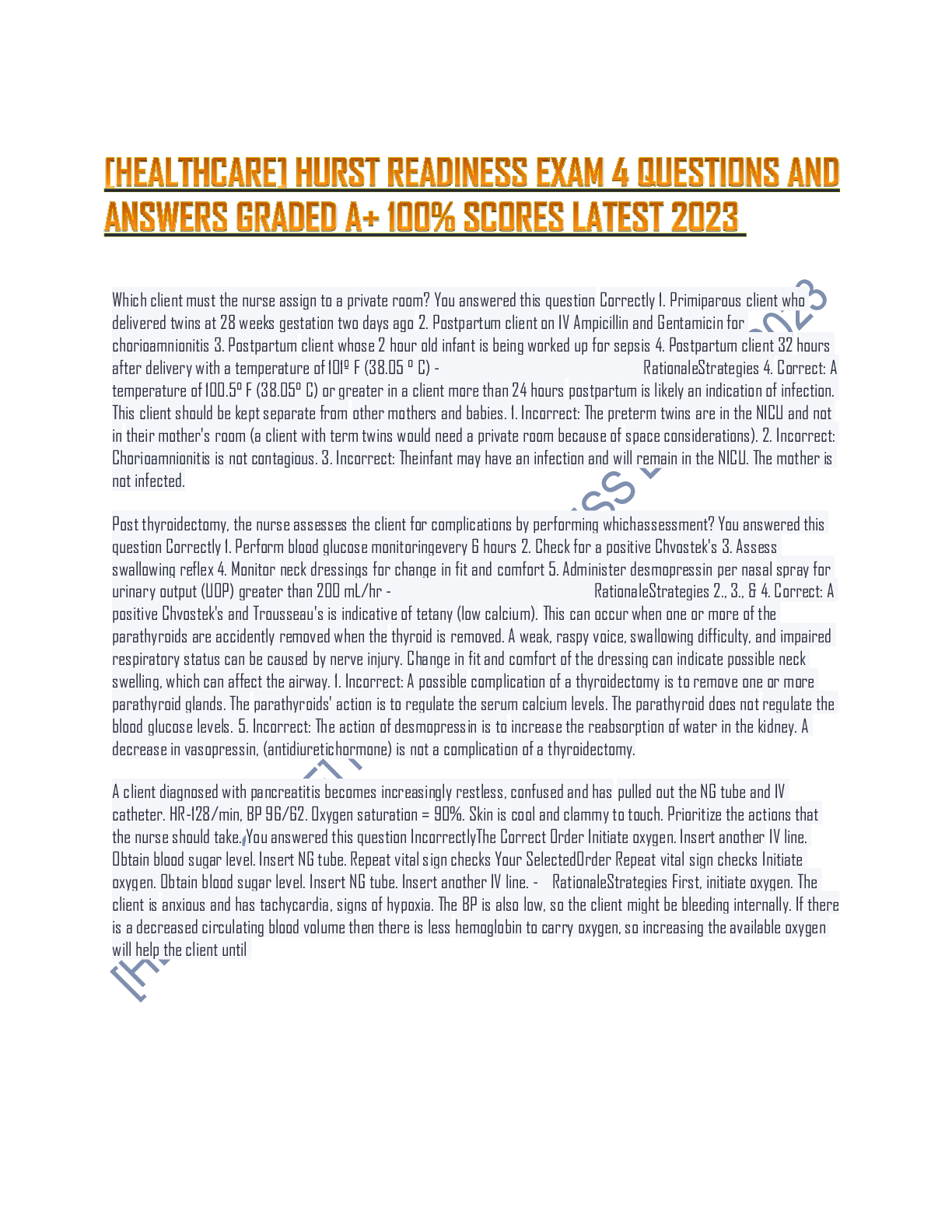
Instant download
Reviews( 0 )
Document information
Connected school, study & course
About the document
Uploaded On
Oct 21, 2023
Number of pages
43
Written in
Additional information
This document has been written for:
Uploaded
Oct 21, 2023
Downloads
0
Views
25

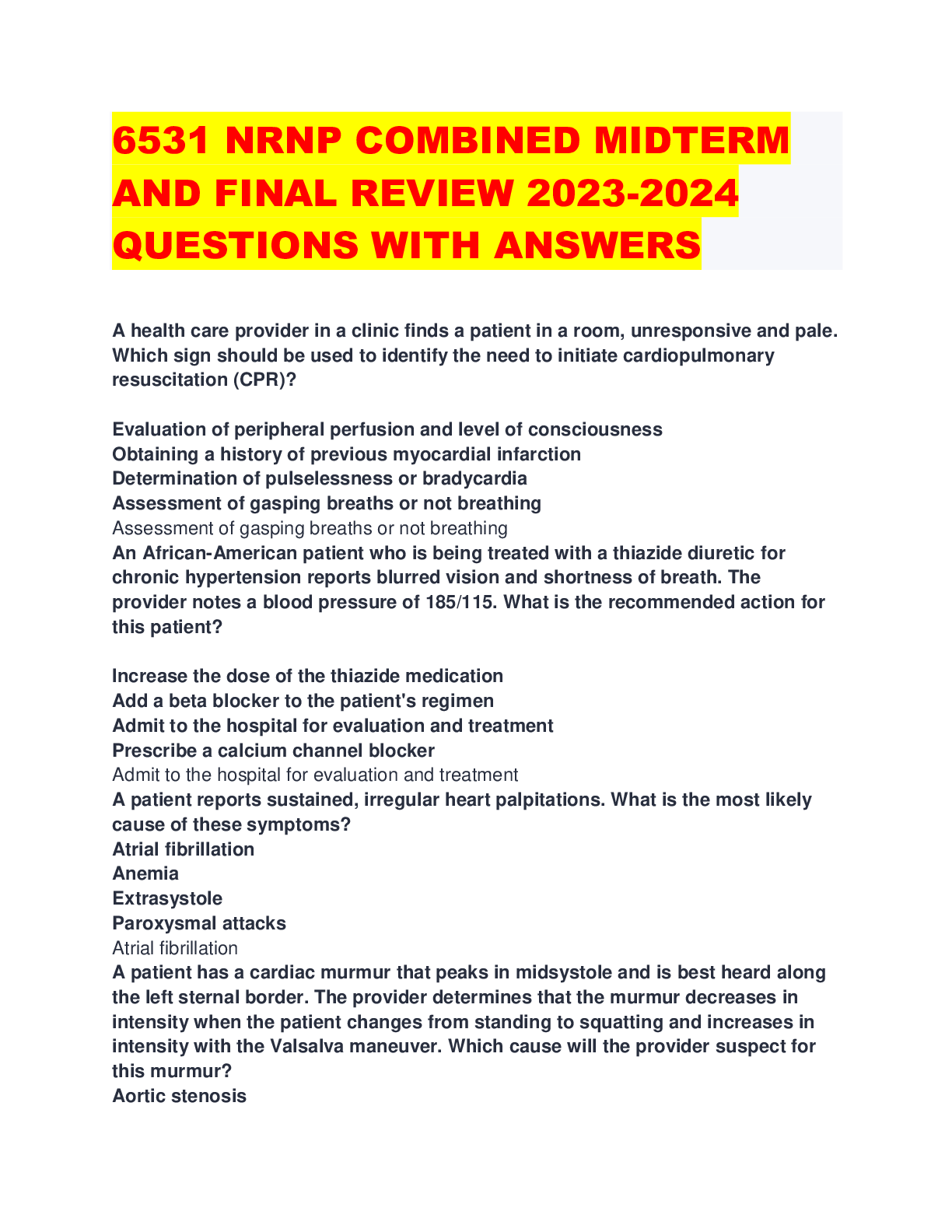
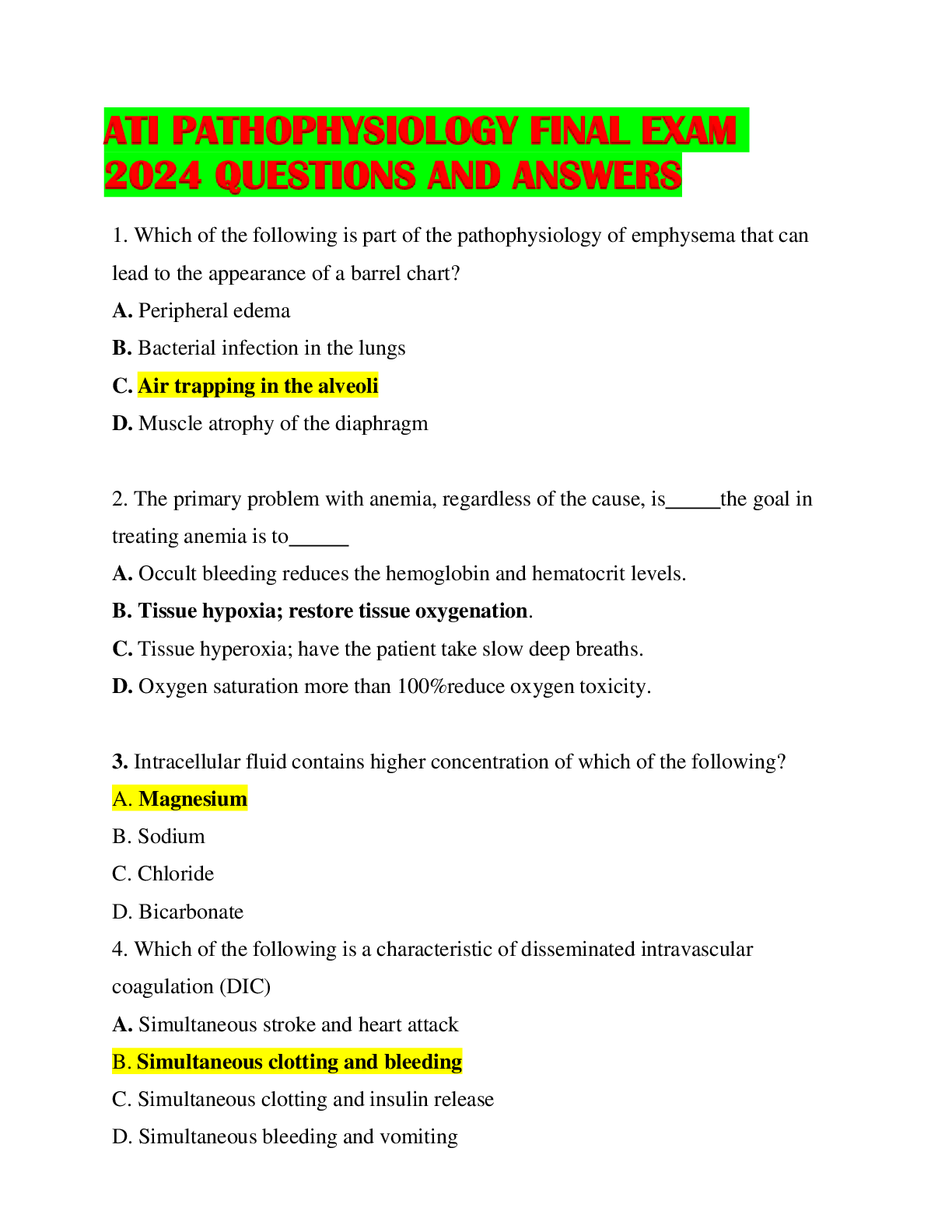
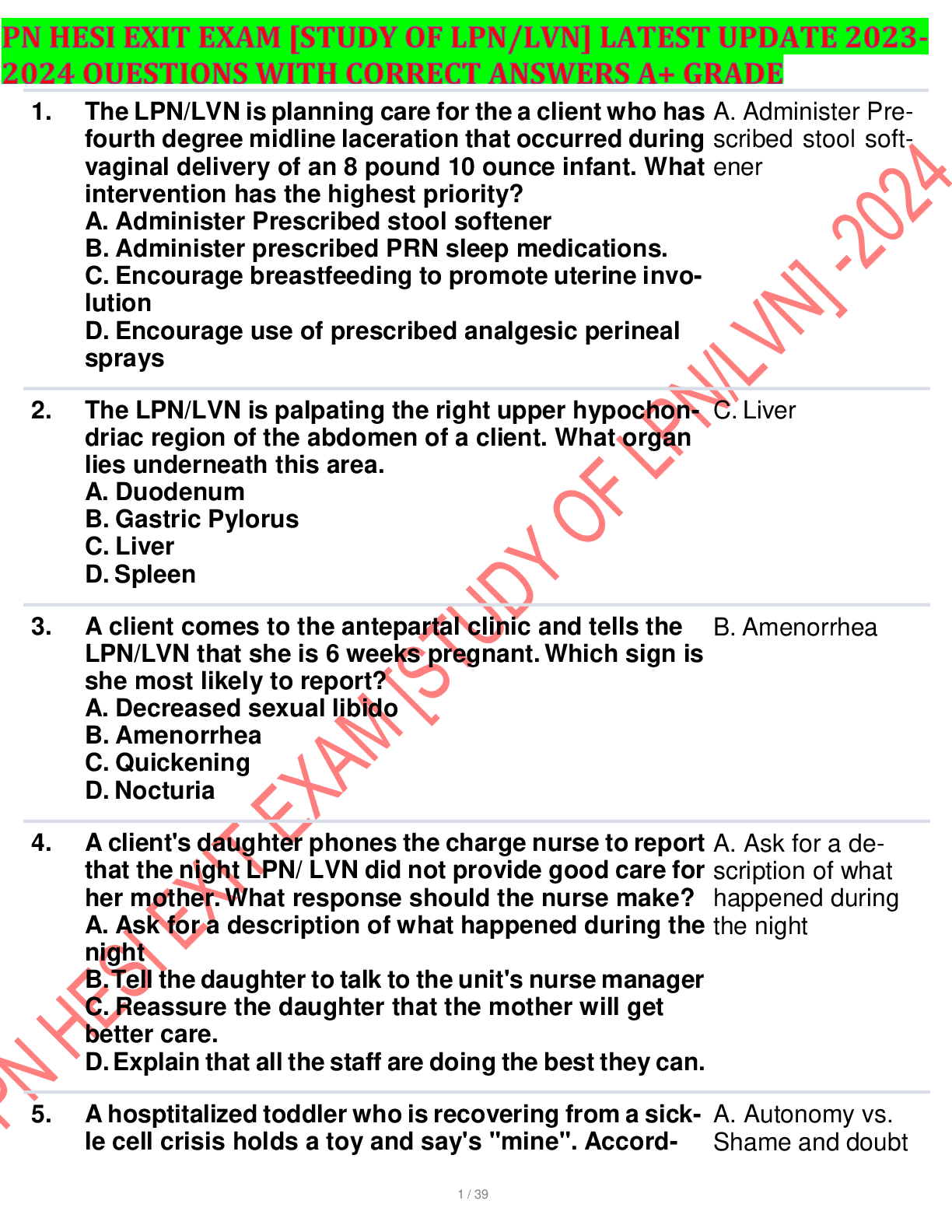

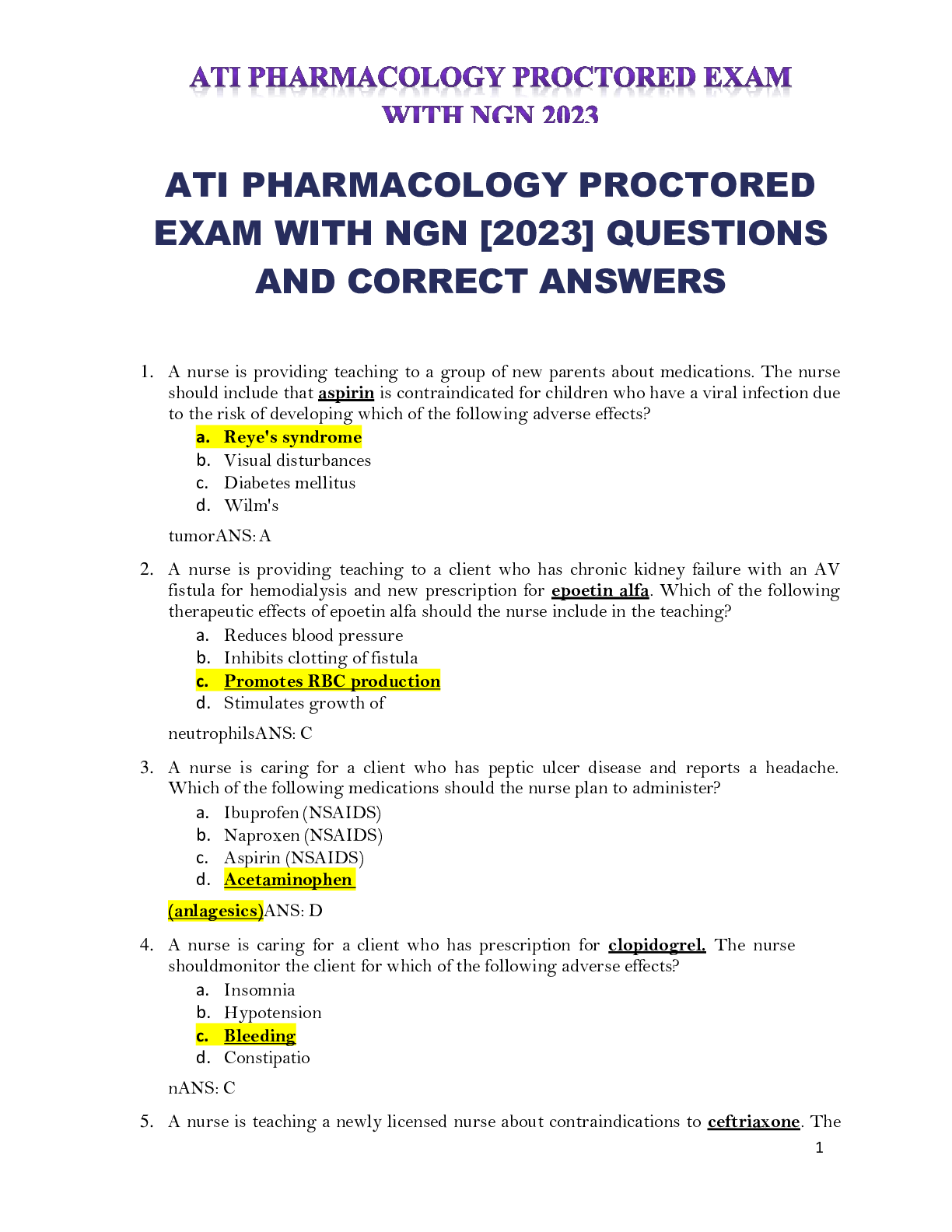
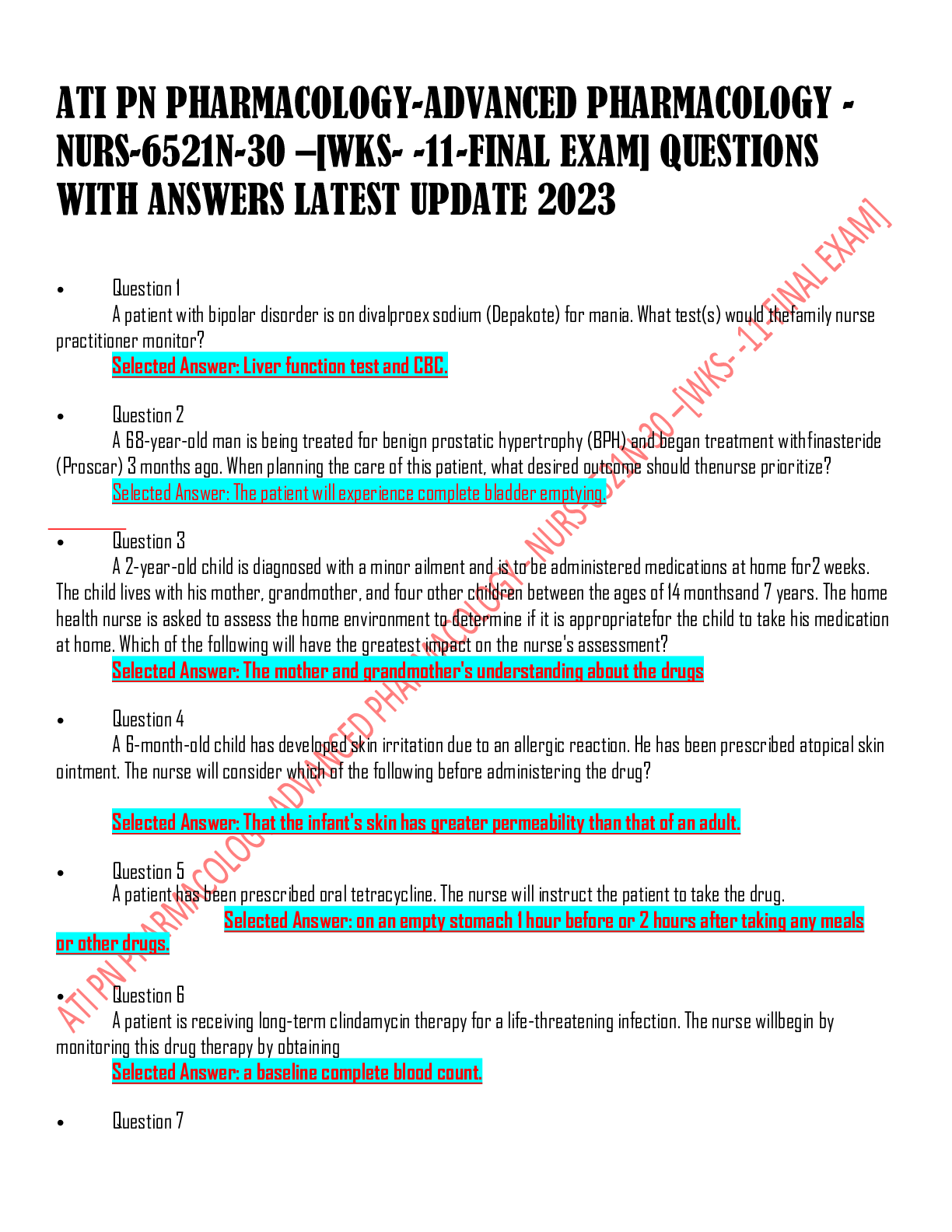




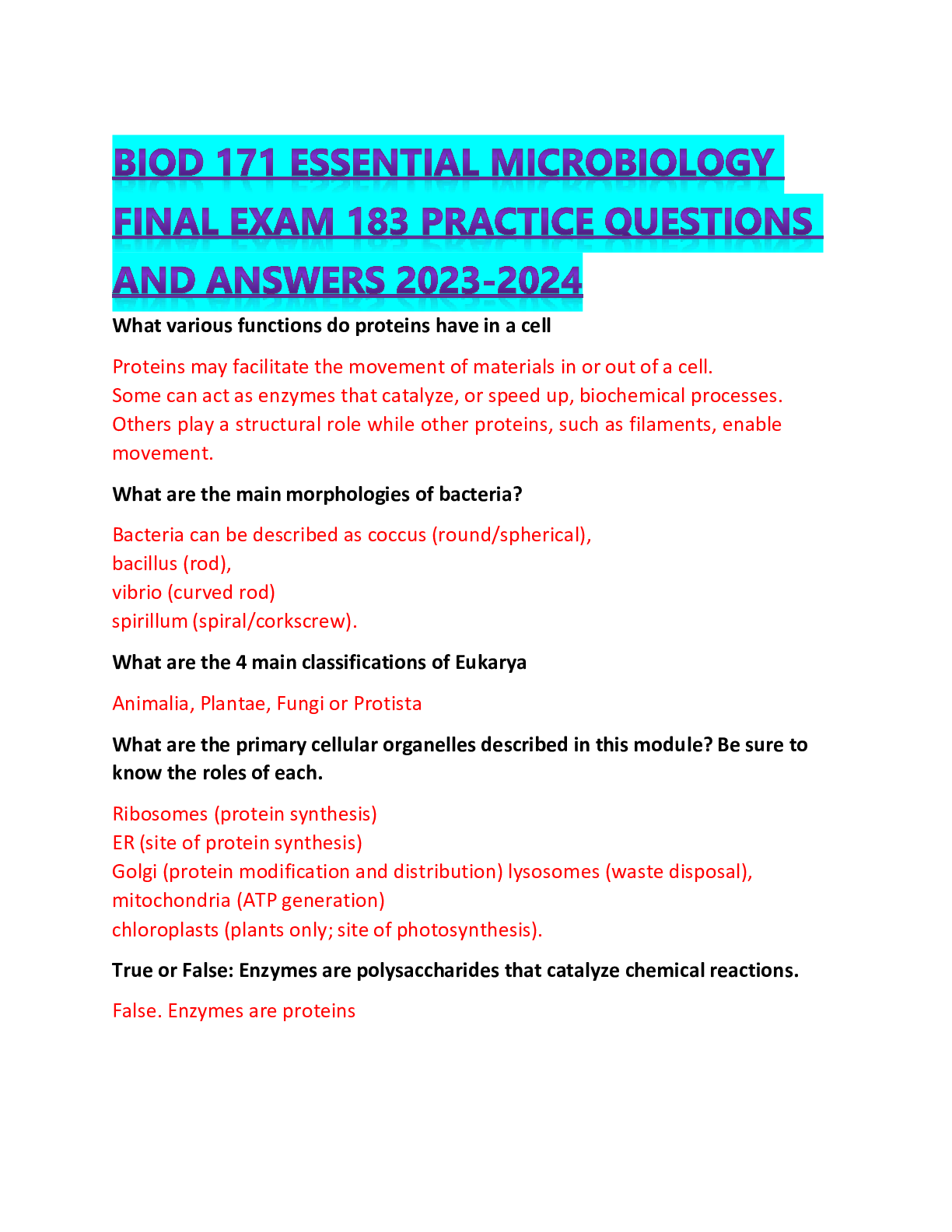
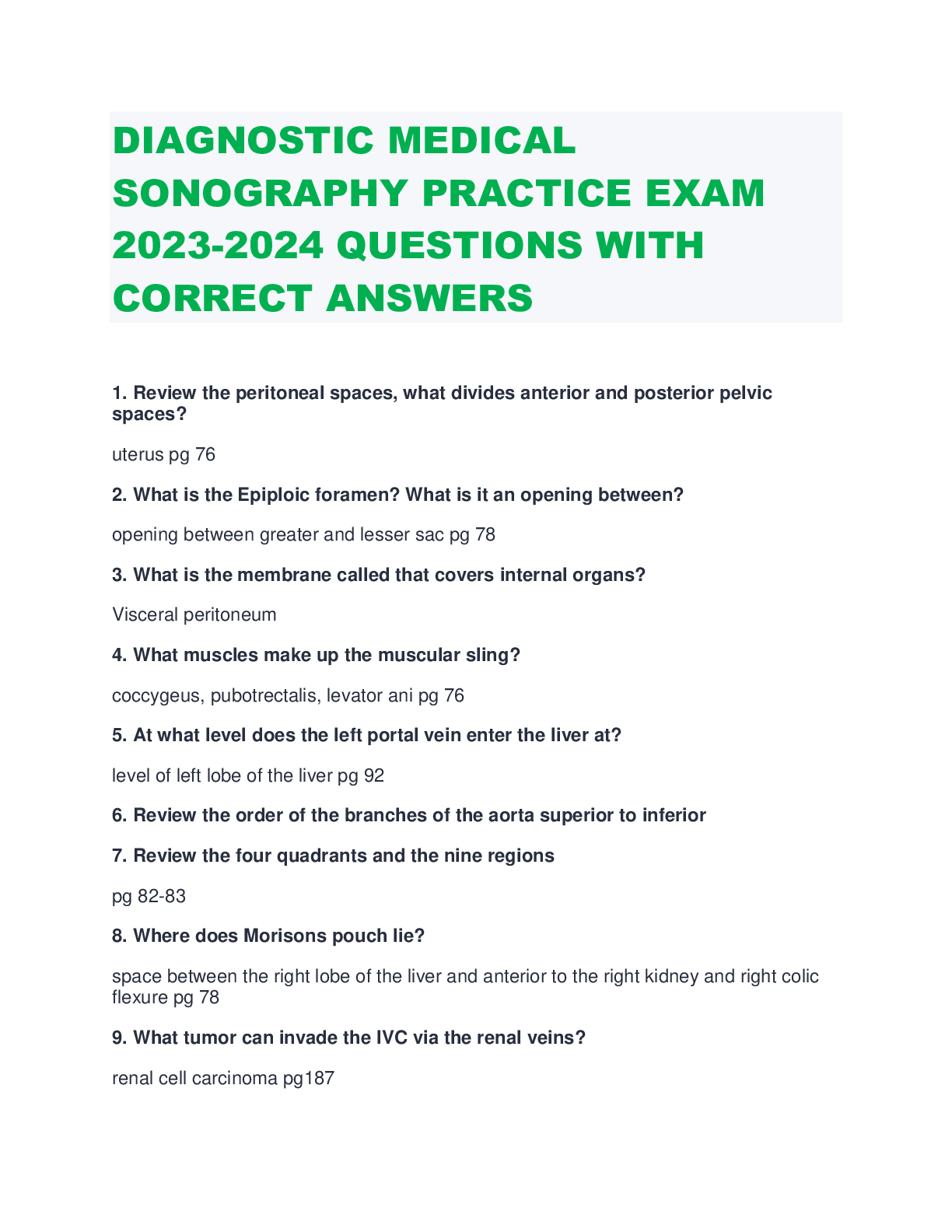
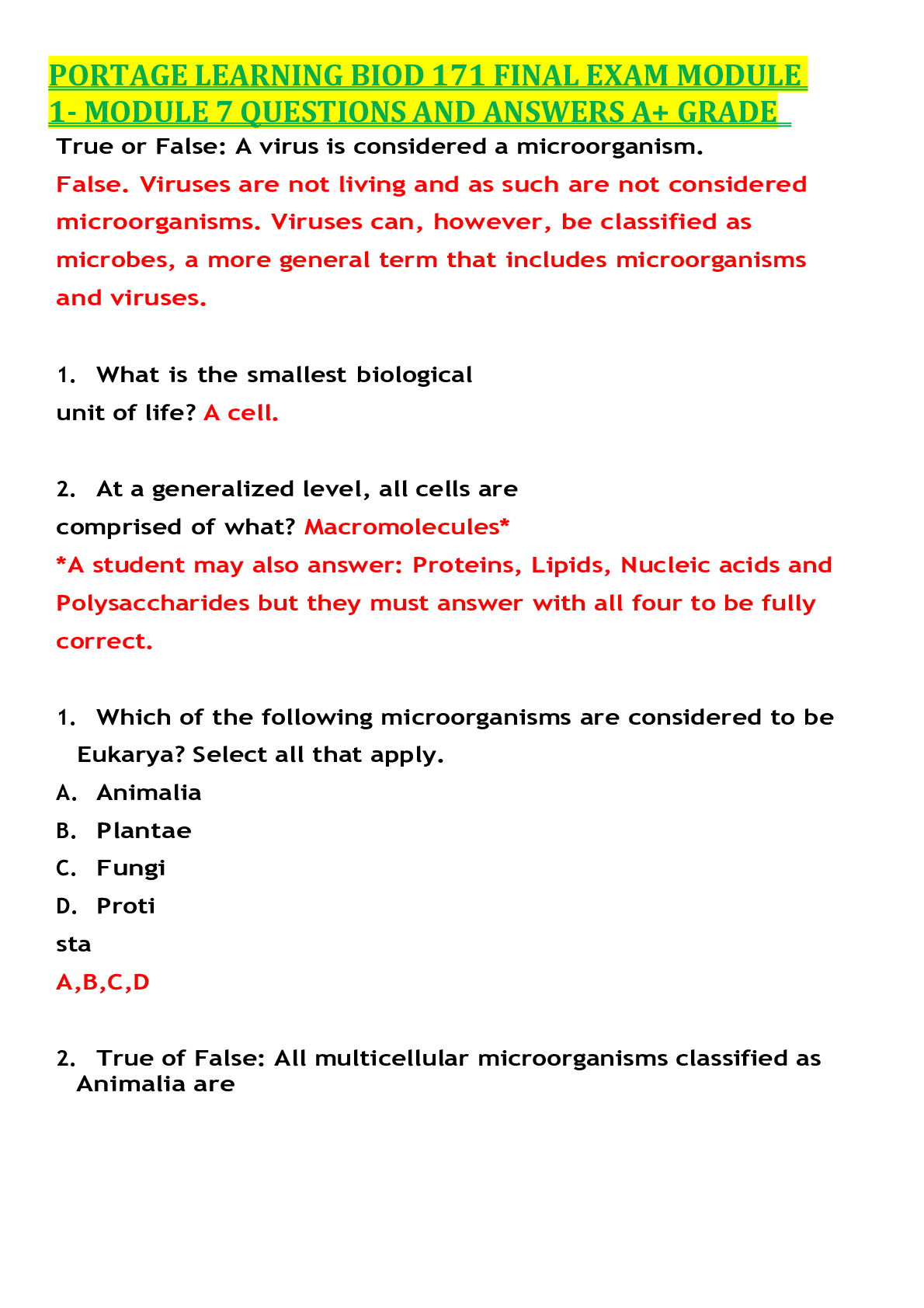
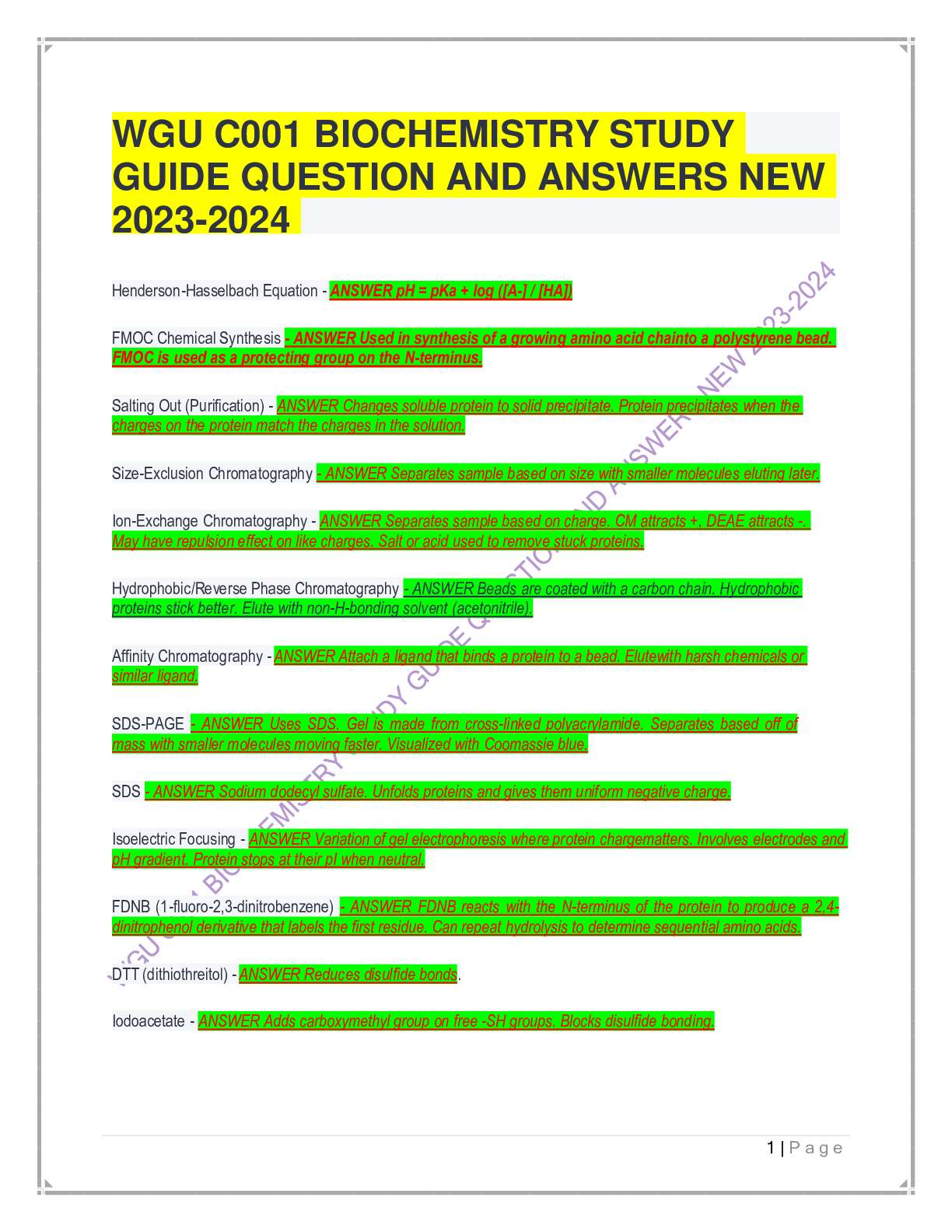

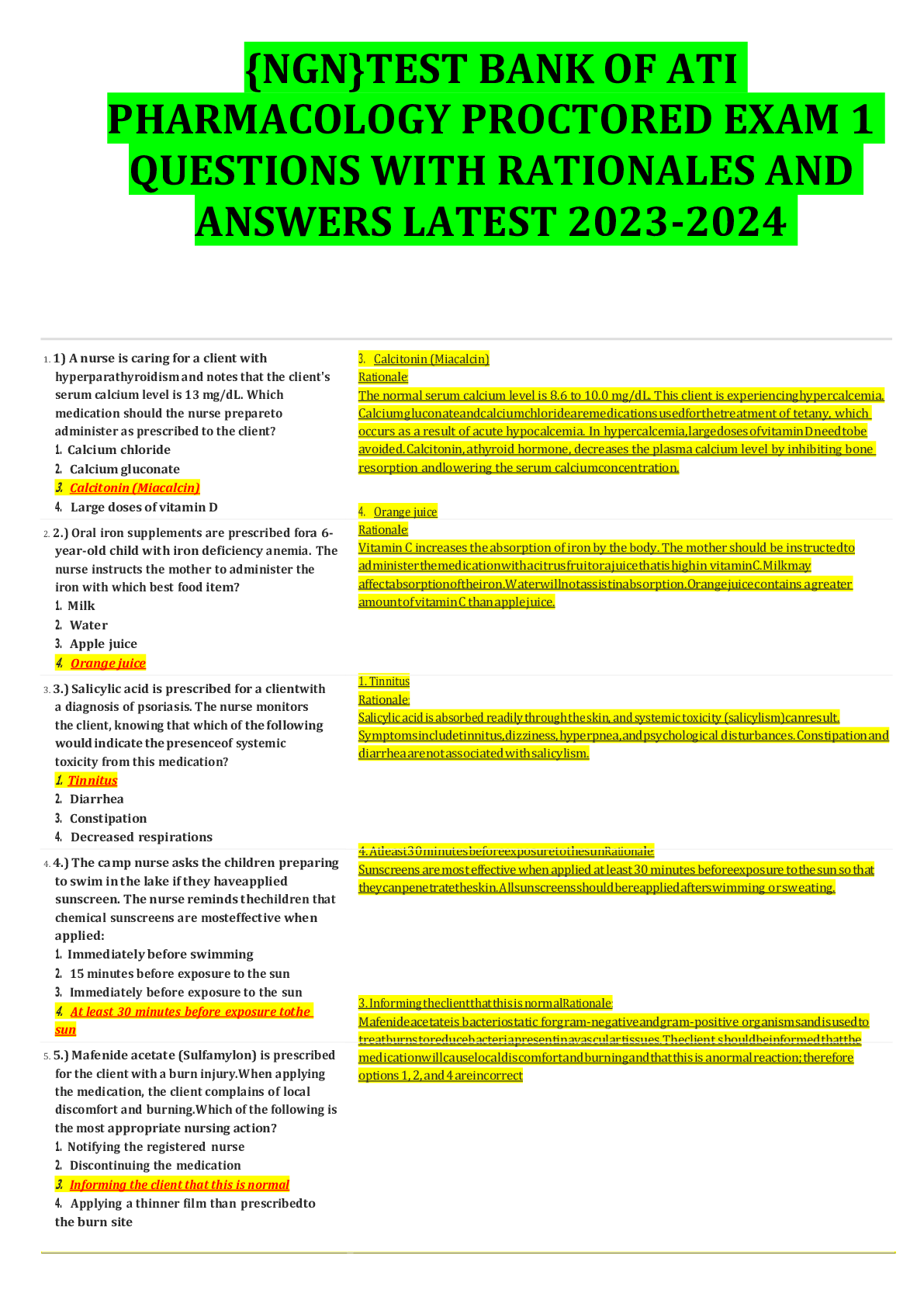



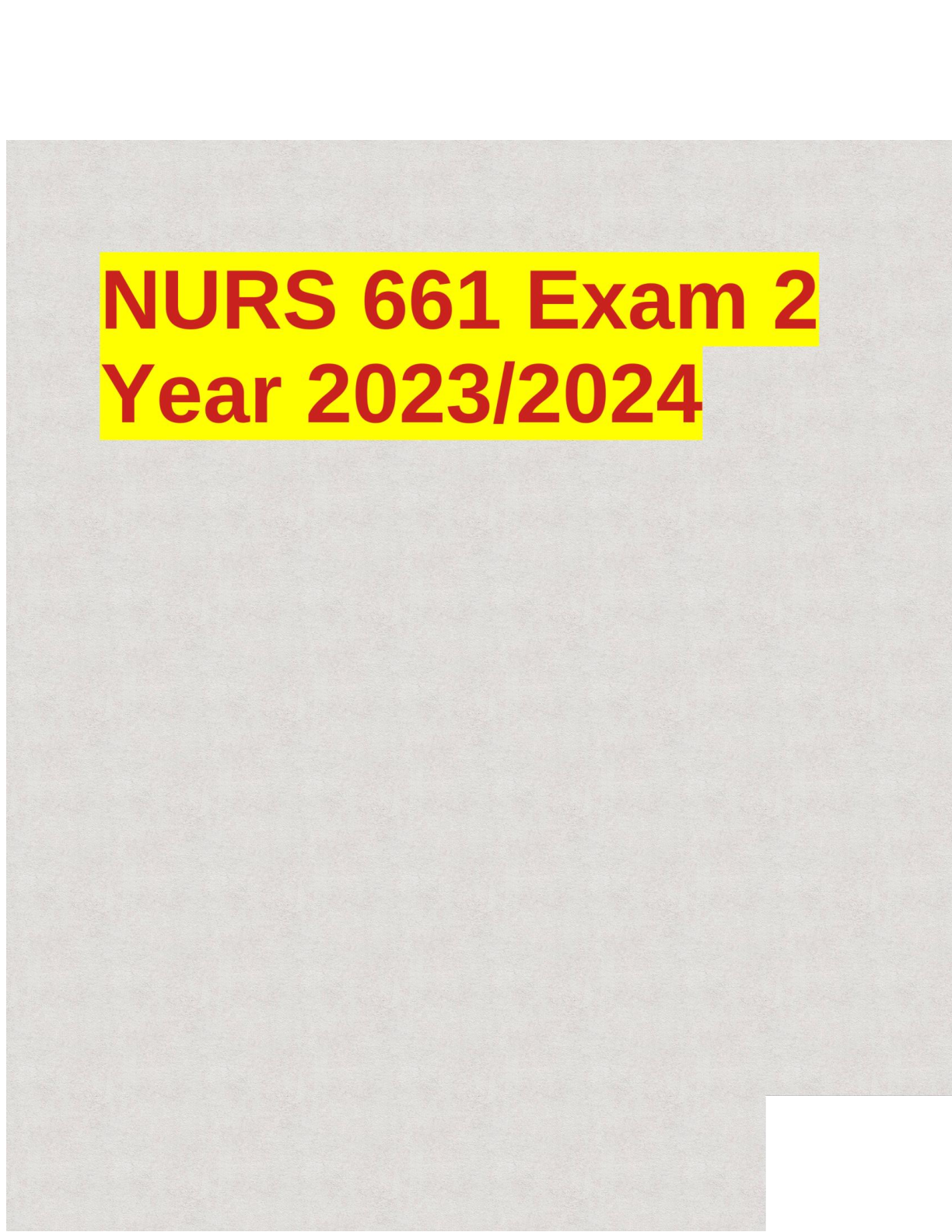



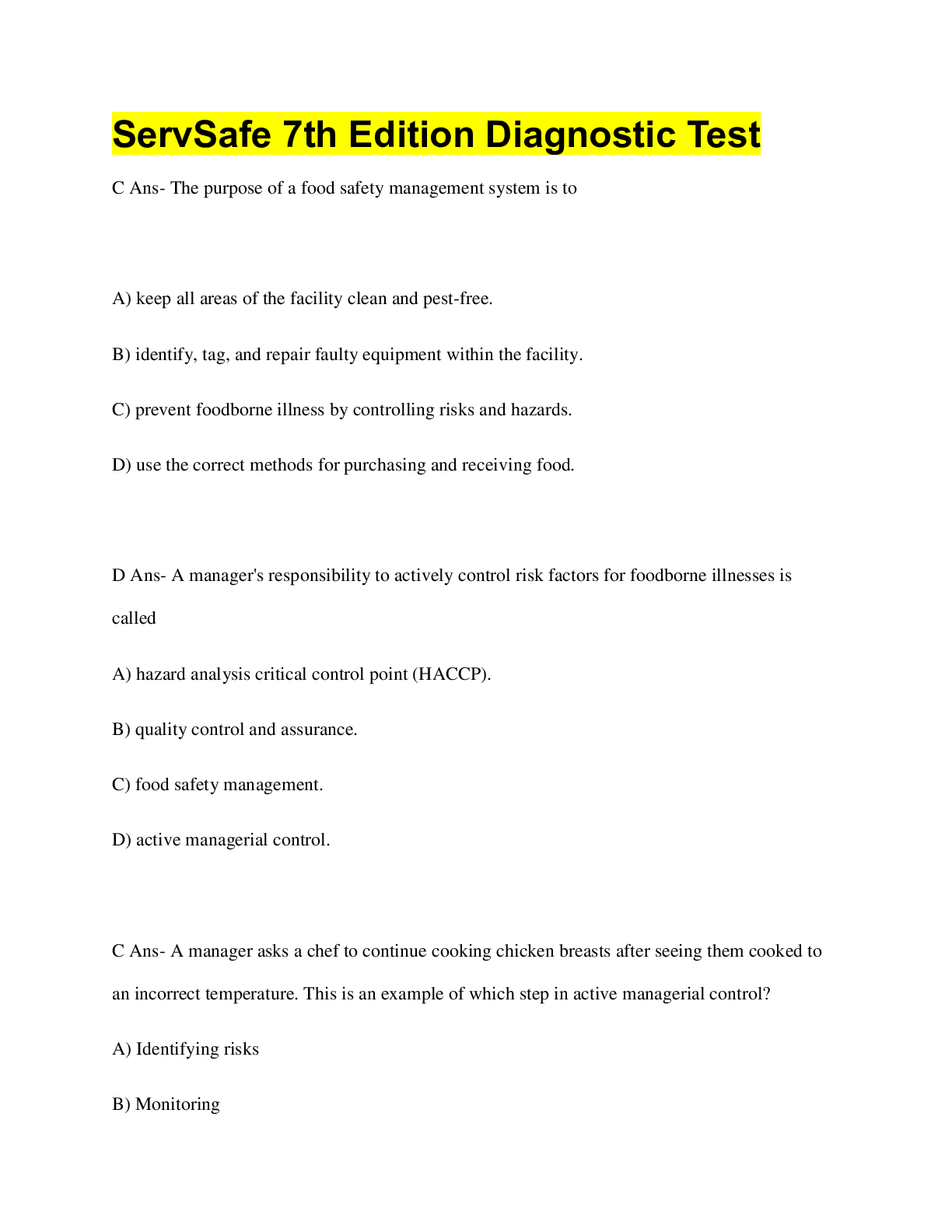
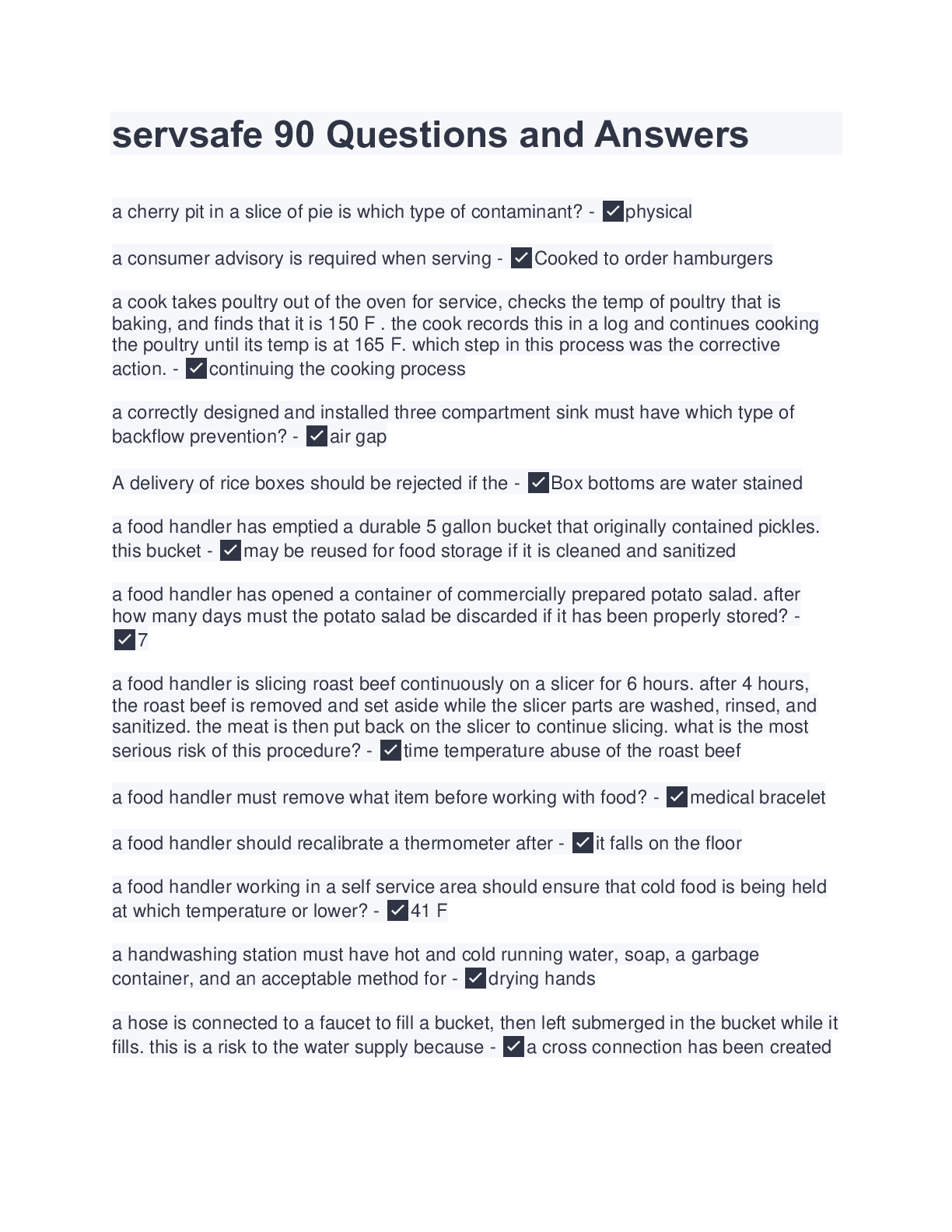
.png)







